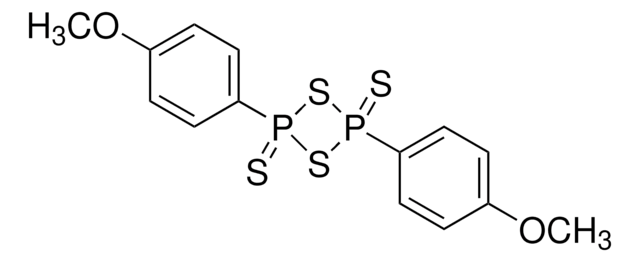About This Item
Recommended Products
form
liquid
concentration
0.30-0.50 M (by NaOH, titration)
0.4 M in THF
technique(s)
tissue culture: suitable (plant)
density
0.881 g/mL at 25 °C
storage temp.
2-8°C
SMILES string
N
InChI
1S/H3N/h1H3
InChI key
QGZKDVFQNNGYKY-UHFFFAOYSA-N
Looking for similar products? Visit Product Comparison Guide
Related Categories
Application
- A phermone in anuran tadpoles
- A nutrient in soil for plant nutrition
Studies of contributions of archaea and bacteria to the ammonia-oxidizing potential of soils
Interaction of ammonia and xenon with imidazole glycerol phosphate synthase from Thermotoga maritima
Metabolism of ammonia in Aedes aegypti fat body and midgut tissues
Used by ammonia-oxidizing bacteria
Signal Word
Danger
Hazard Statements
Precautionary Statements
Hazard Classifications
Acute Tox. 4 Oral - Carc. 2 - Eye Irrit. 2 - Flam. Liq. 2 - STOT SE 3
Target Organs
Central nervous system, Respiratory system
Supplementary Hazards
Storage Class Code
3 - Flammable liquids
WGK
WGK 1
Flash Point(F)
-7.6 °F
Flash Point(C)
-22 °C
Certificates of Analysis (COA)
Search for Certificates of Analysis (COA) by entering the products Lot/Batch Number. Lot and Batch Numbers can be found on a product’s label following the words ‘Lot’ or ‘Batch’.
Already Own This Product?
Find documentation for the products that you have recently purchased in the Document Library.
Customers Also Viewed
Our team of scientists has experience in all areas of research including Life Science, Material Science, Chemical Synthesis, Chromatography, Analytical and many others.
Contact Technical Service










